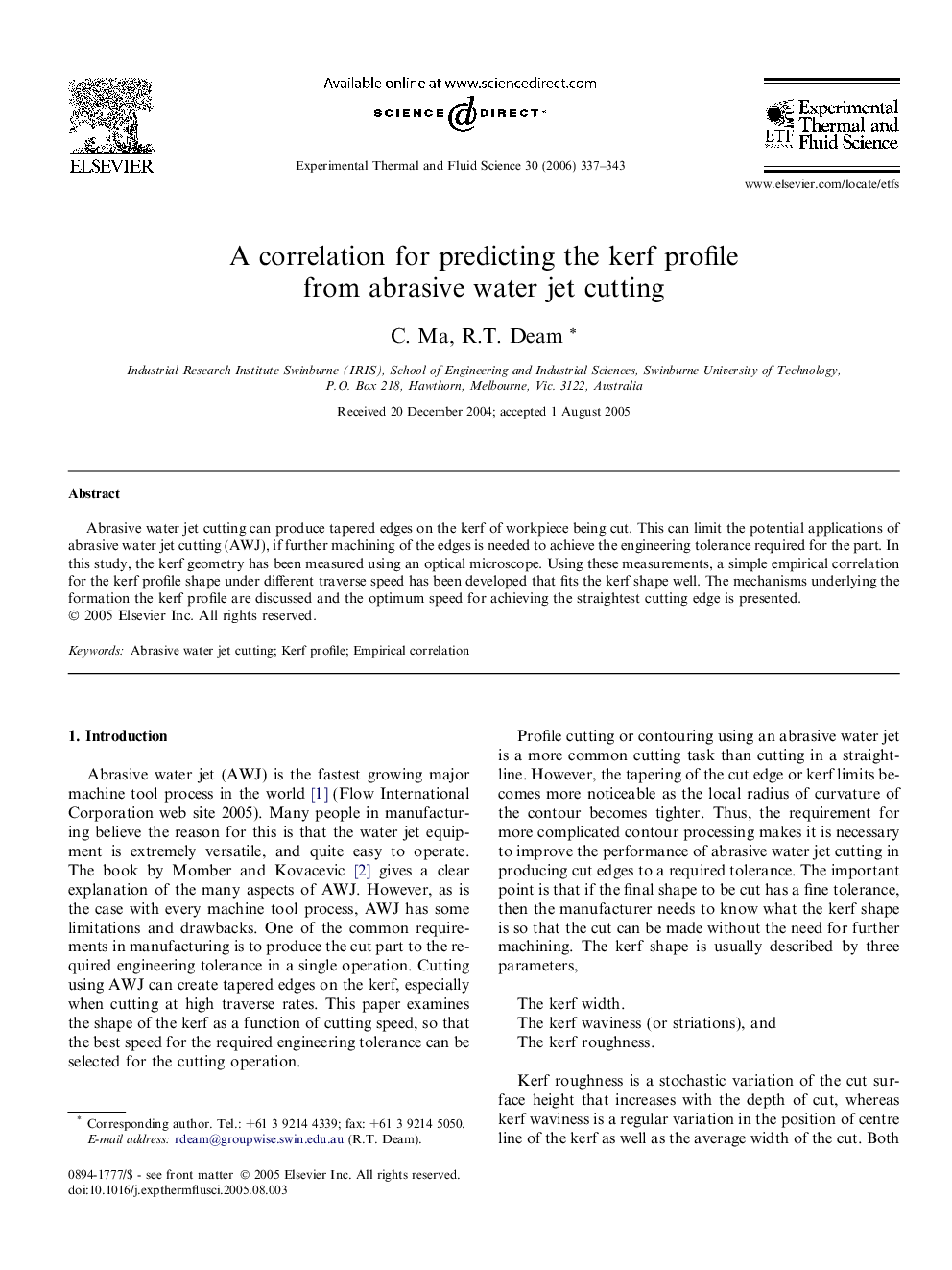| Article ID | Journal | Published Year | Pages | File Type |
|---|---|---|---|---|
| 652522 | Experimental Thermal and Fluid Science | 2006 | 7 Pages |
Abstract
Abrasive water jet cutting can produce tapered edges on the kerf of workpiece being cut. This can limit the potential applications of abrasive water jet cutting (AWJ), if further machining of the edges is needed to achieve the engineering tolerance required for the part. In this study, the kerf geometry has been measured using an optical microscope. Using these measurements, a simple empirical correlation for the kerf profile shape under different traverse speed has been developed that fits the kerf shape well. The mechanisms underlying the formation the kerf profile are discussed and the optimum speed for achieving the straightest cutting edge is presented.
Keywords
Related Topics
Physical Sciences and Engineering
Chemical Engineering
Fluid Flow and Transfer Processes
Authors
C. Ma, R.T. Deam,
